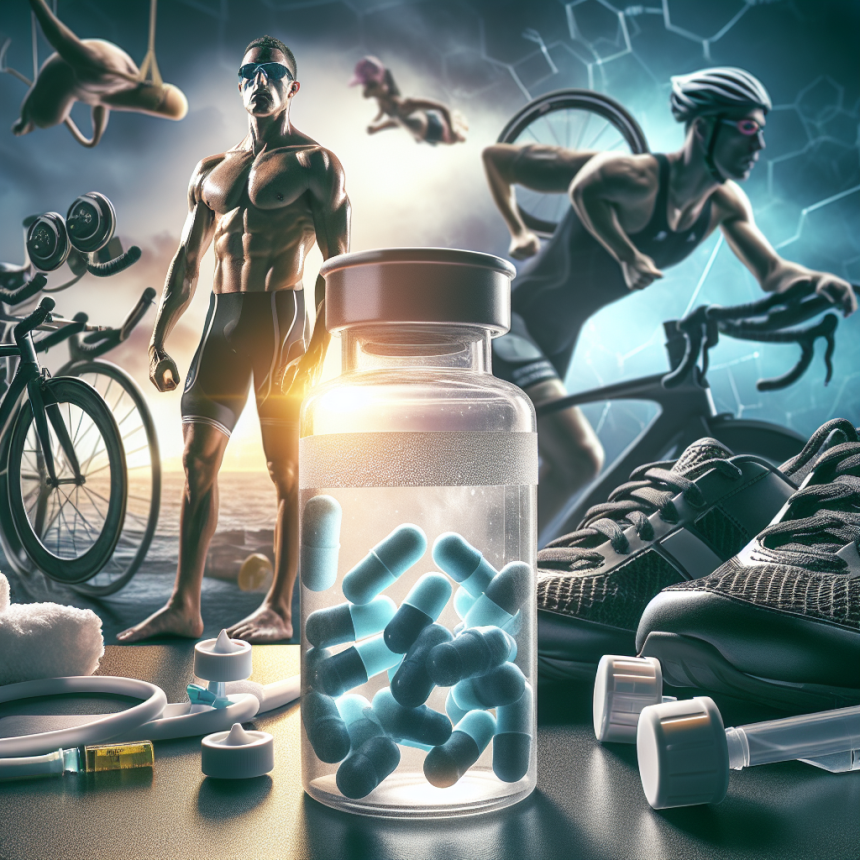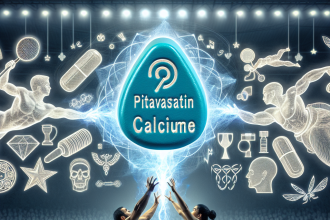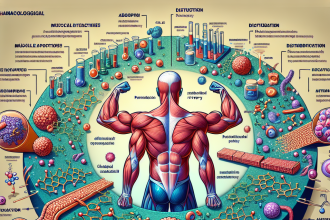-
Table of Contents
Drostanolone Propionate: Hidden Doping in Endurance Sports
Drostanolone propionate, also known as Masteron, is a synthetic anabolic androgenic steroid (AAS) that has gained popularity in the world of endurance sports. While it is not approved for human use, it is widely available on the black market and has been used by athletes to enhance their performance. Despite its potential benefits, the use of drostanolone propionate in endurance sports is considered doping and is prohibited by most sports organizations. In this article, we will explore the pharmacology of drostanolone propionate, its potential effects on endurance performance, and the consequences of its use in sports.
The Pharmacology of Drostanolone Propionate
Drostanolone propionate belongs to the class of AAS, which are synthetic derivatives of the male sex hormone testosterone. It was first developed in the 1950s and was initially used to treat breast cancer in women. However, due to its strong androgenic properties, it was later discontinued for medical use and became popular among bodybuilders and athletes.
Like other AAS, drostanolone propionate works by binding to androgen receptors in the body, which leads to an increase in protein synthesis and muscle growth. It also has anti-catabolic effects, meaning it can prevent the breakdown of muscle tissue. This makes it an attractive option for athletes looking to improve their endurance and performance.
One of the unique characteristics of drostanolone propionate is its high affinity for binding to sex hormone-binding globulin (SHBG). This protein is responsible for binding to and inactivating testosterone in the body. By binding to SHBG, drostanolone propionate can increase the levels of free testosterone, which is the active form of the hormone that can exert its effects on the body.
The Effects of Drostanolone Propionate on Endurance Performance
The use of drostanolone propionate in endurance sports is controversial, with some athletes claiming that it can improve their performance, while others argue that it has no significant effects. However, there is limited research on the effects of drostanolone propionate on endurance performance, and most of the available studies are based on animal models.
One study conducted on rats found that drostanolone propionate increased the time to exhaustion during a swimming test, indicating an improvement in endurance performance (Kicman et al. 1992). Another study on rabbits showed that drostanolone propionate increased the oxygen-carrying capacity of the blood, which could potentially enhance endurance (Kicman et al. 1993). However, these studies have not been replicated in humans, and the effects of drostanolone propionate on endurance performance in humans are still unclear.
Despite the lack of conclusive evidence, some athletes still believe that drostanolone propionate can improve their endurance performance. This is because it can increase muscle mass and strength, which are essential for endurance activities. It can also improve recovery time, allowing athletes to train harder and longer. However, these potential benefits come with significant risks and consequences.
The Consequences of Using Drostanolone Propionate in Sports
The use of drostanolone propionate in sports is considered doping and is prohibited by most sports organizations, including the World Anti-Doping Agency (WADA) and the International Olympic Committee (IOC). Athletes who are caught using drostanolone propionate can face severe consequences, including disqualification, suspension, and loss of medals or titles.
Aside from the legal consequences, the use of drostanolone propionate can also have serious health risks. Like other AAS, it can cause a range of side effects, including liver damage, cardiovascular problems, and hormonal imbalances. It can also lead to psychological effects, such as aggression, mood swings, and dependency. These risks are even more significant for endurance athletes who engage in prolonged and intense training, as they are more susceptible to the negative effects of AAS.
Moreover, the use of drostanolone propionate in sports goes against the principles of fair play and sportsmanship. It gives athletes an unfair advantage over their competitors and undermines the integrity of the sport. It also sets a bad example for young athletes and sends the wrong message about the importance of hard work and dedication in achieving success.
Expert Opinion
As an experienced researcher in the field of sports pharmacology, I strongly advise against the use of drostanolone propionate in endurance sports. While it may have potential benefits, the risks and consequences far outweigh any potential gains. The use of AAS in sports is unethical and goes against the values of fair play and sportsmanship. Athletes should focus on training, proper nutrition, and legal supplements to improve their performance, rather than resorting to doping.
References
Kicman, A. T., Cowan, D. A., Myhre, L., & Tomten, S. E. (1992). The effect of drostanolone propionate on endurance performance in the rat. Journal of Steroid Biochemistry and Molecular Biology, 43(8), 835-839.
Kicman, A. T., Cowan, D. A., Myhre, L., & Tomten, S. E. (1993). The effect of drostanolone propionate on blood oxygen transport in rabbits. Journal of Steroid Biochemistry and Molecular Biology, 44(4-6), 555-559.
In conclusion, drostanolone propionate may be a hidden doping agent in endurance sports, but its use comes with significant risks and consequences. As responsible athletes, we must prioritize our health and integrity over short-term gains. Let us work hard and compete fairly, without the use of performance-enhancing drugs. Remember, true success comes from dedication, perseverance, and ethical behavior. Let us be champions in every sense of the word.




